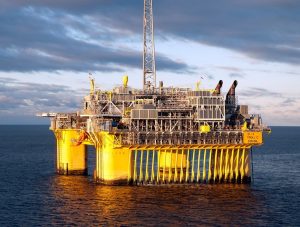More Electrification Potential for Equinor Offshore Norway
 Together with its partners Equinor is looking at the possibility of supplying power from land to three platforms that are currently powered by gas turbines. The transition may cut CO2 emissions from Troll C and the Sleipner area by more than 600,000t per year.
Together with its partners Equinor is looking at the possibility of supplying power from land to three platforms that are currently powered by gas turbines. The transition may cut CO2 emissions from Troll C and the Sleipner area by more than 600,000t per year.
The platforms that may be powered from land are Troll C and the Sleipner field centre that includes the Gudrun tie-in platform in the North Sea. On Troll C, the CO2 emission reduction potential is 365,000t per year by platform electrification. Electrification of the Sleipner field centre and Gudrun, which is powered from Sleipner, has the potential for reducing emissions by 250,000t per year. Electrification of these platforms may also lead to annual reductions of NOx emissions by around 2,500t. All three platforms are in field areas that are already receiving power from land. On the Troll field the Troll A gas platform has been powered from land since it came on stream in 1996, and is operated with minimal production emissions. The aim going forward is to find a solution for tying Troll C to the same power solution by a power cable from the Kollsnes plant by Bergen. The Johan Sverdrup field will be powered from land, together with several fields on the Utsira High, including Equinor’s Gina Krog field, which came on stream last year. Possibilities for extending the power supply from Gina Krog are being pursued, with the aim of connecting the Sleipner field centre and the Gudrun platform to the land-based power supply.
Securing profitability is central to succeed in realising such projects, and support from the Business Sector’s NOx Fund will be an important contribution. The electrification plans require close and targeted collaboration between Equinor, partners and authorities to find good solutions from a technical and financial perspective. To secure long-term value-creation on the NCS, Equinor focusses on reducing the CO2 footprint from its operations. Last year the company reached its goal of reducing annual CO2 emissions from the NCS by 1.2t million from 2008 to 2020, almost three years ahead of schedule. Consequently, the company raised its ambition and aims to reduce CO2 emissions from its offshore operations by a further 2t million per year by 2030.






